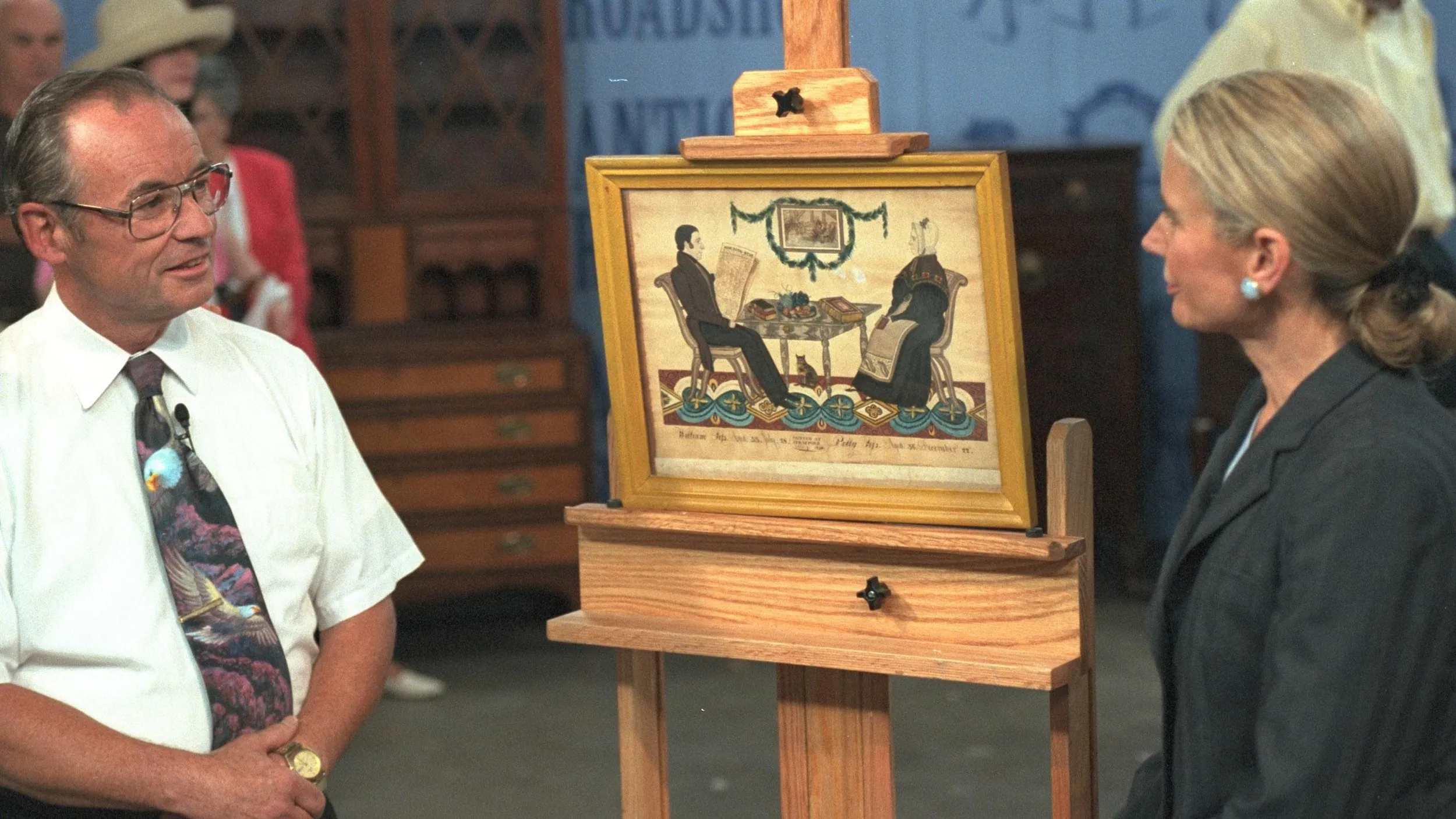GUEST: Major John Rowe was famous for having led the militia from Rockport to the Battle of Bunker Hill.
APPRAISER: That's wonderful, and he came back with no wounds.
GUEST: No, he came back quite perfect and raised 13 children.
APPRAISER: Wonderful. What great history.
GUEST: So he had a lot of vitality.
APPRAISER: And this is his desk, descended in his family. You mentioned that this is even listed in the will, his will from 1765.
GUEST: Yes, there is a will which is now in the Sandy Bay Historical Society in Rockport, and the desk is listed with the date 1765.
APPRAISER: Okay, it would have been one of the prize pieces in the estate, I know.
GUEST: Absolutely would have.
APPRAISER: Well, I love the blockfront form, and what you've brought, of course, is a blockfront, slant-front desk, and this is the first authentic blockfront that's been brought to the Roadshow in the five years that I've been doing the show. Really? So we are really excited to see it. And the blockfront form actually is a form that came from baroque furniture in Europe. It was really a Dutch tradition of having the front of a piece that's shaped. And there were very few pieces made in England in the blockfront form, but in Boston, it became the center for this very, very expensive type of furniture.
GUEST: Right.
APPRAISER: This desk, if we actually look at the lid, we look at this wonderful figured wood, this piece was chosen to really show its grain. And we look at this form, and the wonderful thing about blockfront furniture is that all this blocking is completely unnecessary functionally, right?
GUEST: I know.
APPRAISER: So it was made for the wealthiest families in America, because one had to actually... You had to cut away and waste all this wood, so all this, you're cutting it out of a board and literally wasting all this wood. So it's a wonderful form. Now, your form, Barbara-- I feel that this desk was made in Salem, Massachusetts.
GUEST: I think so, I think you're right.
APPRAISER: I'm going to tell you quickly why. First of all, this shaping is typical of those on Salem desks. Also, if we come down to the feet and we look down here, it's a typical Salem foot. The shaping of the foot, the way the talons are are typically Salem. If I show you this piece at the Metropolitan Museum of Art... This piece, you notice that something's missing here? I'm gonna show you what it looked like. It had, actually, this is a secretary bookcase, and it's missing its shell and this is what that shell looked like, probably like that. It's a typical Salem scallop shell, 1760s, mahogany, and you could have that recreated based on that shell. First of all, this wonderful blockfront desk made in Salem, in the Boston tradition, okay-- a rare form. Typically at auction, these do bring upwards of $80,000 or $85,000, this form. Your piece, Barbara, I have to tell you, when the appraisers, when all of us saw this in the morning, we thought, "Well, that's what it is." There is something about it that suggests that something was on top, and I have to show you that. Barbara, you have this witness mark from a molding that was applied to the perimeter of the top at one time. You also have the nail holes with dark oxidation showing that those nails held that molding on for probably over 100, 200 years, and there was a bookcase section probably on top. And so we were all disappointed to see that. It still tells a great story. We're honored to have you bring it in, and this is the guest of honor today, this desk. Value-wise, it's probably around $15,000 instead of $85,000 because you have half of a piece.



